As a new parent, you may be surprised to see your baby lose hair. Hair loss in babies is quite common and usually nothing to worry about. In fact, it's often just a natural part of their development. However, it's important to understand the different types of hair loss that can affect babies and their causes, as well as what you can do to help your baby's hair grow back. In this article, we'll discuss the common causes of baby hair loss and provide practical advice for concerned parents.
Types of baby hair loss
-
Cradle Cap:
Also known as seborrheic dermatitis, cradle cap is a common scalp condition that affects newborns and young infants. It's characterized by scaly, yellow or brownish patches on the scalp. Cradle cap usually goes away on its own, but in severe cases, a doctor may prescribe a medicated shampoo or cream to help clear it up.

-
Telogen Effluvium:
This type of hair loss occurs when a large number of hair follicles on the scalp enter the resting phase of the hair growth cycle at the same time, causing hair to fall out. Telogen effluvium can be triggered by a variety of factors, including illness, surgery, and stress.

-
Traction Alopecia:
Traction alopecia is a type of hair loss that occurs when hair is pulled too tightly, causing damage to the hair follicles. This can happen when babies wear tight hairstyles such as braids or ponytails, or when they spend a lot of time lying on their backs.

Causes of baby hair loss
- Hormonal Changes: Many babies experience hair loss due to hormonal changes after birth. These changes can affect the hair growth cycle and cause hair to fall out.
- Friction: Babies who spend a lot of time lying on their backs can develop a bald spot on the back of their head where the hair rubs against the mattress. This type of hair loss is usually temporary and the hair will grow back once the baby starts to sit up and move around more. To prevent friction-related hair loss, consider using silk bedding, which is softer and less likely to cause damage to your baby's delicate hair.
- Rubbing or Scratching: Babies may rub or scratch their heads, which can cause hair to fall out. This is especially common in babies with cradle cap, as the itchy patches can be quite uncomfortable.
Diagnosing and Treating Baby Hair Loss
If you're concerned about your baby's hair loss, it's important to talk to your doctor. They can examine your baby's scalp and determine the underlying cause of the bald spot. Treatment will of course depend on the cause of the hair loss. Let's have a look at the most common remedies:
- For cradle cap, there are a lot of shampoos available that will soften and remove the scale. The Mustella foam shampoo is one of parents favourites and has hundreds of beaming reviews. For more severe cases, and if your child suffers from eczema or other skin condition, your doctor might recommend using a medicated shampoo or cream to help clear up the patches. You can also refer to the American Academy of Dermatology Association in the video below
- If your baby suffers from telogen effluvium, there usually is not much that can be done about it and treatment is rarely necessary. The hair will usually grow back on its own.
- In cases of traction alopecia, replace your cotton cot sheets by silk ones. Silk reduces the friction against your baby's hair and will allow them to regrow. If you baby spends time in a bouncy chair, we also recommend placing a silk pillowcase on top of the chair to reduce the friction. You should see hair regrowth happening after only a couple of weeks.
Is Baby Hair Loss Permanent?
In most cases, baby hair loss is temporary and the hair will grow back on its own. However, if the hair loss is caused by a medical condition, it may be more difficult to treat. In these cases, your doctor will work with you to develop a treatment plan.
Helping Your Baby's Hair Grow Back
There are a few things you can do to help your baby's hair grow back after hair loss. First, avoid tight hairstyles that can pull on the hair and cause damage to the hair follicles. Second, make sure your baby's scalp is clean and healthy. Use a gentle shampoo designed for babies and avoid using any harsh chemicals or products on their scalp. Lastly, use real silk bedding as opposed to satin. Satin is often confused with silk but is made out of polyester and doesn't offer the same breathability properties as silk for your baby.


